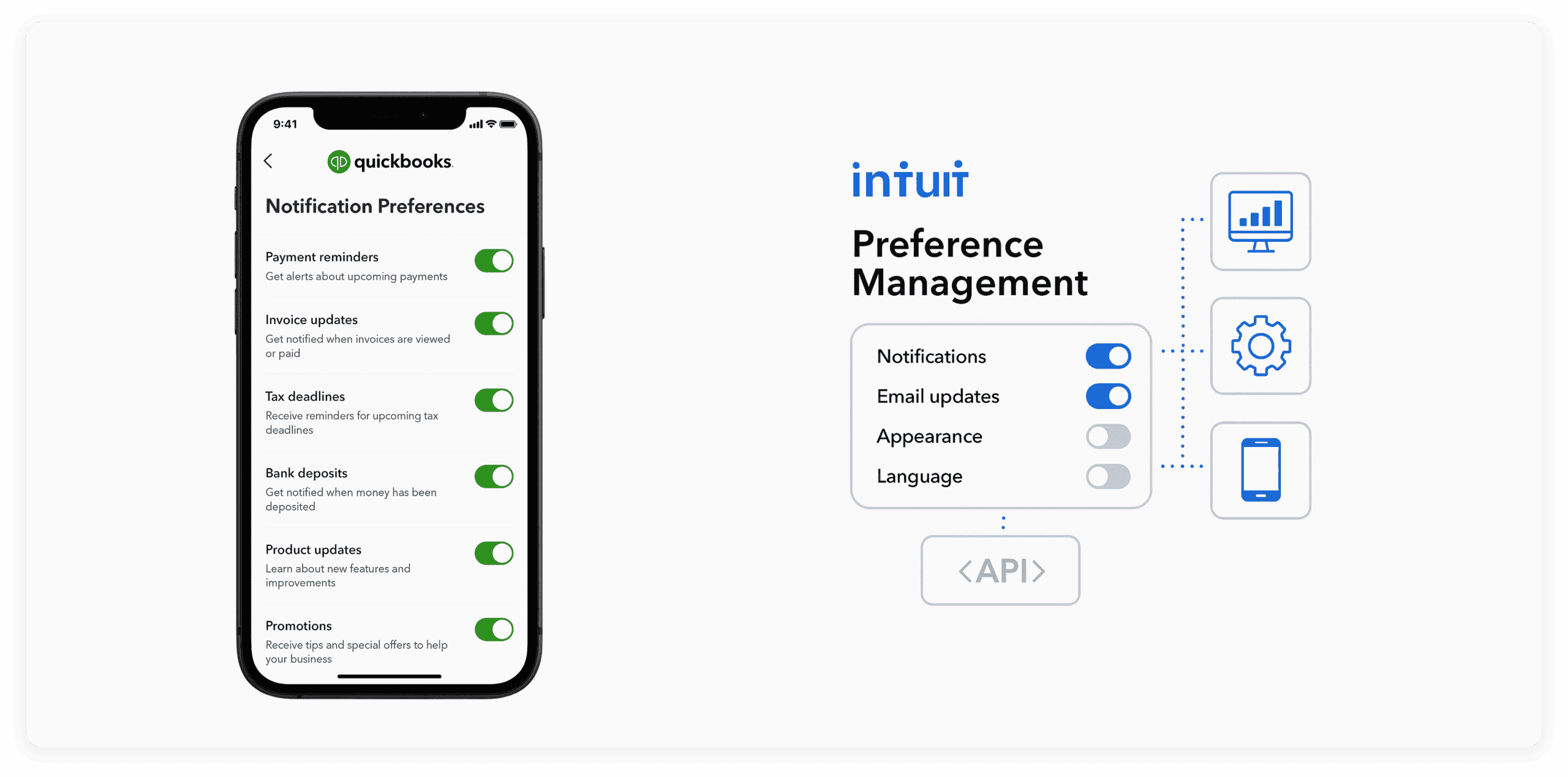Intuit Preference Center Overview
The Intuit Preference Center (IPC) empowers over 100 million users to manage their preferences seamlessly across all Intuit products. This unified platform enhances user personalization while providing internal teams with essential tools for integration.

The Problem: A Broken Personalization Experience
Imagine setting your app preferences—
- Turning off promotional notifications,
- Adjusting display settings,
- Choosing how you want to be contacted.
Now imagine logging back in the next day from a different device… and everything’s gone 🥺 .
That was the reality for millions of Intuit users. Preferences were tied to local storage – temporary, fragile, and device-specific. Whether users logged out, cleared cache, switched devices, or reinstalled an app, their settings disappeared.
The result? A jarring, inconsistent experience that left users frustrated and eroded trust in the brand’s ability to remember them.


Siloed Systems
Engineering and product teams were duplicating efforts with fragmented, one-off implementations:
Redundant infrastructure created inefficiencies and inconsistent UX.
Basic preference functionality required weeks of custom development.
Absence of centralized governance introduced data silos and compliance risk.
My Role & Strategy
- Defined and evangelized the platform vision across stakeholders and BUs.
- Partnered closely with engineering, design, and UXFabric to deliver APIs, a preference management portal, and embeddable UI widgets.
- Developed a governance model to ensure scalability and guardrails.
- Championed developer enablement via a self-serve onboarding flow and real-time preference propagation—without requiring app redeployments.

Outcome Metrics
Customer Experience
- Unified preferences across devices, platforms, and sessions
- Increased trust and reduced friction across Intuit apps
Developer Velocity
- Cut integration time from 4–6 sprints to under 3 days
- Saved 8, 000+ engineering hours
- Streamlined onboarding via web-based preference portal
Adoption & Performance
- 100M+ users across 40+ use cases (e.g., TurboTax, QuickBooks, Inventory, Expenses)
- Zero downtime, sub-150ms latency.
Key Learnings from Building Scalable Preference Management Systems
By treating preference management as a core capability, we enabled downstream teams to move faster and deliver more personalized experiences. Investing in DX (Developer Experience) matters. Customer consistency builds trust.

Platform Thinking Unlocks Scale

Investing in DX Matters
